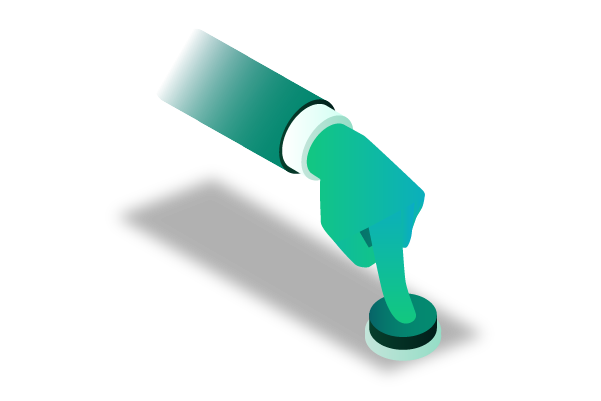In the world of blockchain technology, one key tool that plays a pivotal role is the CLI, which stands for Command Line Interface. Imagine it as the Swiss Army knife of blockchain operations.
CLI in Blockchain offers a user-friendly way for individuals and organizations to interact with and manage blockchain networks. It simplifies complex tasks, making them accessible to a broader audience, and contributes to the decentralized nature of blockchain systems.
This CLI in Blockchain can be thought of as the control panel for blockchain networks. It enables users to perform various actions like creating and managing digital assets, validating transactions, and even setting up and configuring nodes on the network.
Its importance is not limited to just developers; anyone interested in blockchain can use it to explore and engage with these decentralized systems. As blockchain technology continues to evolve, CLI plays a crucial role in making the technology more user-friendly and accessible, shaping the future of decentralized systems across various industries.
Understanding the Basics: What is CLI?

CLI, or Command Line Interface, is like a tech-savvy chat with your computer. Instead of clicking around with a mouse, you talk to your system by typing in specific commands. Now, let’s dive into the world of blockchain.
CLI in Blockchain is like the behind-the-scenes wizard that lets developers and users communicate directly with blockchain networks. It’s how they send money, ask questions about data, and keep their digital systems running smoothly. It’s like having a secret handshake with the blockchain world.
Also Read: Distributed Identifiers (DIDs): An Introduction for Beginners
So, imagine you’re on a quest in the blockchain realm. With CLI in Blockchain, you can speak the language of the blockchain and perform tasks like sending transactions or checking the status of the network.
It’s the command center that empowers you to navigate this digital landscape efficiently, without the need for a fancy graphical interface. Whether you’re a developer building the next big thing or just a curious explorer, CLI in Blockchain is your trusty sidekick in this exciting journey.
Why is CLI Important in Blockchain?
Command Line Interface (CLI) is important in the context of blockchain technology for several reasons:
1. Direct Interaction
CLI in Blockchain enables users to directly engage with the blockchain, providing them with a user-friendly way to have precise control over their actions on the network.
With CLI in Blockchain, you can interact with the blockchain in a straightforward manner, allowing you to perform various operations with ease and flexibility. This hands-on approach empowers users to manage their blockchain activities efficiently, making it accessible and intuitive for both beginners and experienced users alike.
2. Flexibility
This adaptability empowers developers to navigate the diverse landscape of blockchain projects with ease and precision, making CLI tools a valuable asset in the blockchain development toolkit.
CLI in Blockchain allows developers to easily tailor their interactions with the technology, providing the flexibility needed to meet the unique requirements of different blockchain projects. By using command-line tools, developers can seamlessly customize their experiences, ensuring that their actions align with the specific needs of the blockchain they are working on.
3. Efficiency
When it comes to performing tasks on your computer, using Command Line Interface (CLI) operations can be a real game-changer, especially in the world of Blockchain. CLI operations are like the streamlined, turbocharged version of their graphical counterparts, using fewer computer resources and zipping through tasks with impressive speed and efficiency.
Imagine it as the difference between taking a rocket and a bicycle to reach your destination – CLI in Blockchain is that rocket, getting things done swiftly and without unnecessary resource hogging. So, whether you’re managing your cryptocurrency wallet or executing smart contracts, CLI in Blockchain can give you the edge you need for a smoother, more efficient experience.
4. Automation
CLI, which stands for Command Line Interface, is a nifty tool that can be a real game-changer in simplifying your work. It lets you automate repetitive tasks by creating little scripts, making your life easier, and saving you from those annoying slip-ups we all make from time to time.
Whether you’re a tech wizard or just someone looking to get things done more efficiently, CLI can be a trusty sidekick. And guess what? You can even apply this magic to the world of Blockchain with CLI in Blockchain, streamlining tasks and boosting productivity in this exciting, decentralized realm.
Popular CLI Tools in the Blockchain World

Blockchain technology has gained widespread adoption and popularity in recent years, and managing various aspects of blockchain networks often requires powerful and versatile command-line tools. These CLI tools play a crucial role in facilitating blockchain development, deployment, and management tasks.
They provide developers, administrators, and enthusiasts with the means to interact with blockchain networks, smart contracts, and associated components efficiently. Here are some of the popular CLI tools frequently used in the blockchain world:
1. Geth
Geth, which stands for “Go Ethereum,” is like the Swiss Army knife of the crypto world. It’s the official tool for folks diving into the world of Ethereum, and it’s all about making things happen on the Ethereum blockchain using a straightforward command-line interface (CLI in Blockchain).
With Geth, you can run your very own Ethereum node, kind of like having your own little piece of the Ethereum network, mine Ether if you’re into that, send transactions like digital money transfers, and even chat with smart contracts, which are like self-executing programs on the Ethereum blockchain. So, if you’re ready to dive into the exciting world of Ethereum, Geth is your trusty sidekick for all things crypto-related!
2. Truffle
Truffle is like a Swiss Army knife for Ethereum developers, offering a handy set of tools to make building, testing, and deploying smart contracts a breeze.
Think of it as your trusty sidekick, the Truffle CLI in Blockchain, which simplifies the whole development process. Whether you’re a seasoned developer or just starting out, Truffle has got your back, making Ethereum development more accessible and efficient.
3. Web3.js
Web3.js, not a CLI tool in itself but an essential JavaScript library, plays a crucial role in the CLI in Blockchain ecosystem. It enables developers to interact with Ethereum and Ethereum-compatible blockchains programmatically.
Think of it as a toolkit that empowers you to build applications and automate tasks on these blockchains, making it easier to manage and work with digital assets, smart contracts, and decentralized applications.
4. Parity
Parity is like a helpful tool for Ethereum, called a “CLI in Blockchain.” It’s kind of like a digital Swiss Army knife that lets you do a bunch of things with Ethereum. You can use it to boss around your Ethereum node, make your private chains, and talk to the Ethereum network.
So, whether you’re a crypto enthusiast or a developer, Parity’s got your back when you want to get things done on Ethereum.
5. Solc
Solc, short for the Solidity Compiler, is like the go-to tool when you’re working on Blockchain projects. It’s basically a software you run on your computer using the Command Line Interface (CLI in Blockchain), and what it does is pretty cool: it takes the code you write for your smart contracts, the ones that are meant to run on the Ethereum Virtual Machine (EVM), and turns that code into something the EVM can understand and execute.
In simple terms, it’s like translating your smart contract code into a language the Blockchain can speak, making it essential for anyone developing smart contracts for Ethereum or other blockchain platforms.
6. IPFS
IPFS, short for InterPlanetary File System, may not be a blockchain itself, but it’s frequently employed alongside blockchain initiatives.
This nifty system provides a user-friendly command-line interface (CLI in Blockchain) that lets you store and fetch data in a decentralized way, making it a valuable tool for ensuring data integrity and accessibility within blockchain projects.
7. Hyperledger Fabric CLI
The Hyperledger Fabric CLI, known as the CLI in Blockchain, is a user-friendly command-line tool designed for enterprises working with blockchain solutions. It simplifies the management and interaction with the Hyperledger Fabric network, making it easier for users to perform tasks like deploying smart contracts, creating and managing peers, and monitoring the health of the network.
This handy tool streamlines blockchain operations, ensuring that users can navigate the complexities of enterprise blockchain with ease.
How to Get Started with CLI in Blockchain?

Getting started with the Command Line Interface (CLI) in blockchain involves using command-line tools to interact with and manage various blockchain networks and protocols.
Whether you’re a developer, a blockchain enthusiast, or a system administrator, using the CLI is essential for tasks such as deploying smart contracts, monitoring network activity, and configuring nodes. Here’s a step-by-step guide to help you get started with CLI in blockchain:
1. Choose the Right Tool
When you’re dealing with blockchain, it’s crucial to pick the right CLI tool for the job. Depending on the specific blockchain platform you’re using, like Ethereum or Binance Smart Chain, you’ll want to choose the appropriate CLI in Blockchain tool.
These tools help you interact with the blockchain, create smart contracts, and manage transactions efficiently. So, before you start coding or managing your blockchain project, make sure you’ve got the right CLI tool in your toolkit.
2. Learn the Basics
To get started with CLI in Blockchain, start by acquainting yourself with some fundamental command-line interface (CLI) commands. Many blockchain platforms provide user-friendly documentation that’s perfect for beginners.
These guides will walk you through essential commands and actions you can perform through the command line, making it easy to interact with blockchain technology using text-based commands. So, take your time to explore these resources, and you’ll quickly become comfortable navigating the CLI in Blockchain.
Also Read: What is ERC? Understanding the Essence in Blockchain
3. Practice
Just like learning anything else, getting good at using the CLI in Blockchain takes practice. It’s kind of like learning to ride a bike; you start with the basics and work your way up to more challenging stuff.
So, begin with easy tasks like creating a wallet or checking your balance, and as you get more comfortable, you can venture into more complex operations like making transactions or even coding smart contracts using the CLI in Blockchain. The key is to keep at it and not get discouraged if things seem a bit tricky at first. Practice makes perfect, and soon you’ll be navigating the CLI in Blockchain like a pro!
4. Join Communities
Connect with online blockchain communities to expand your knowledge and get involved in discussions about CLI in Blockchain. These communities are like treasure troves of information, providing helpful insights, practical tips, and solutions to common issues.
By actively participating in these groups, you can tap into a wealth of expertise and grow your understanding of CLI in Blockchain while building valuable connections with like-minded individuals.
Conclusion
In the ever-evolving world of blockchain, CLI in Blockchain stands out as an essential tool, even in the age of user-friendly graphical interfaces. It simplifies direct interaction with blockchain networks, making it a must-know for developers, enthusiasts, and casual users.
Whether you’re a developer dreaming of creating the next groundbreaking decentralized app or an enthusiast eager to explore blockchain’s potential, mastering CLI in Blockchain opens doors to exciting opportunities.
In a world where blockchain is reshaping industries and challenging traditional norms, CLI in Blockchain reminds us of the power of simplicity and direct control.
This tool is set to play a pivotal role in shaping the blockchain’s future. So, whether you’re looking to build, explore, or just stay informed, CLI in Blockchain is a tool you can’t afford to overlook. This serves as your portal to accessing the full potential of this groundbreaking technology.
Disclaimer: The information provided by HeLa Labs in this article is intended for general informational purposes and does not reflect the company’s opinion. It is not intended as investment advice or recommendations. Readers are strongly advised to conduct their own thorough research and consult with a qualified financial advisor before making any financial decisions.

I am Carina Caringal, a technical writer specializing in blockchain engineering concepts, decentralized systems, crypto infrastructure, and Web3 technologies. My work focuses on analyzing and translating complex technical mechanisms into precise, structured, and insightful content for both developers and non-technical readers who want a deeper understanding of the decentralized ecosystem.
My background in blockchain and cryptocurrency is rooted in years of independent research, continuous learning, and hands-on exploration across multiple protocols and network architectures. I study the underlying mechanics of distributed ledger technology, from consensus algorithms and smart contract logic to network scalability, security models, cryptographic principles, and interoperability frameworks. This technical foundation shapes the way I approach every article, ensuring accuracy, depth, and relevance.
- Carina Caringalhttps://helalabs.com/blog/author/carina-caringal/
- Carina Caringalhttps://helalabs.com/blog/author/carina-caringal/
- Carina Caringalhttps://helalabs.com/blog/author/carina-caringal/
- Carina Caringalhttps://helalabs.com/blog/author/carina-caringal/

